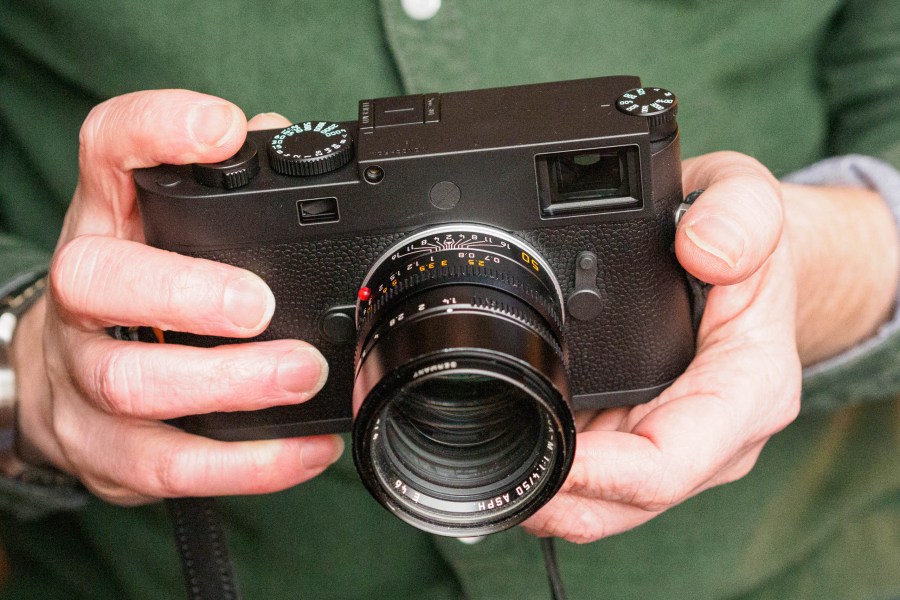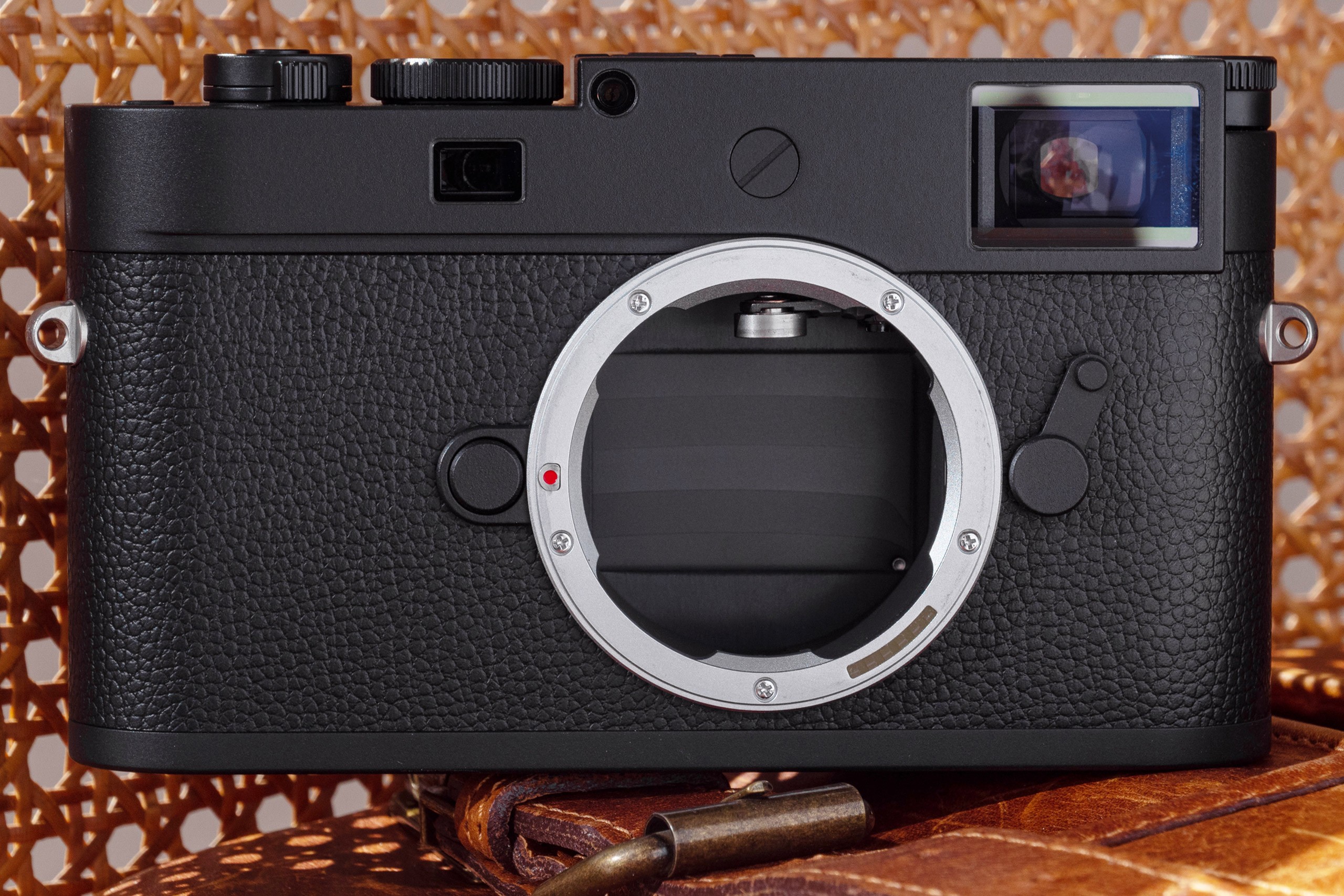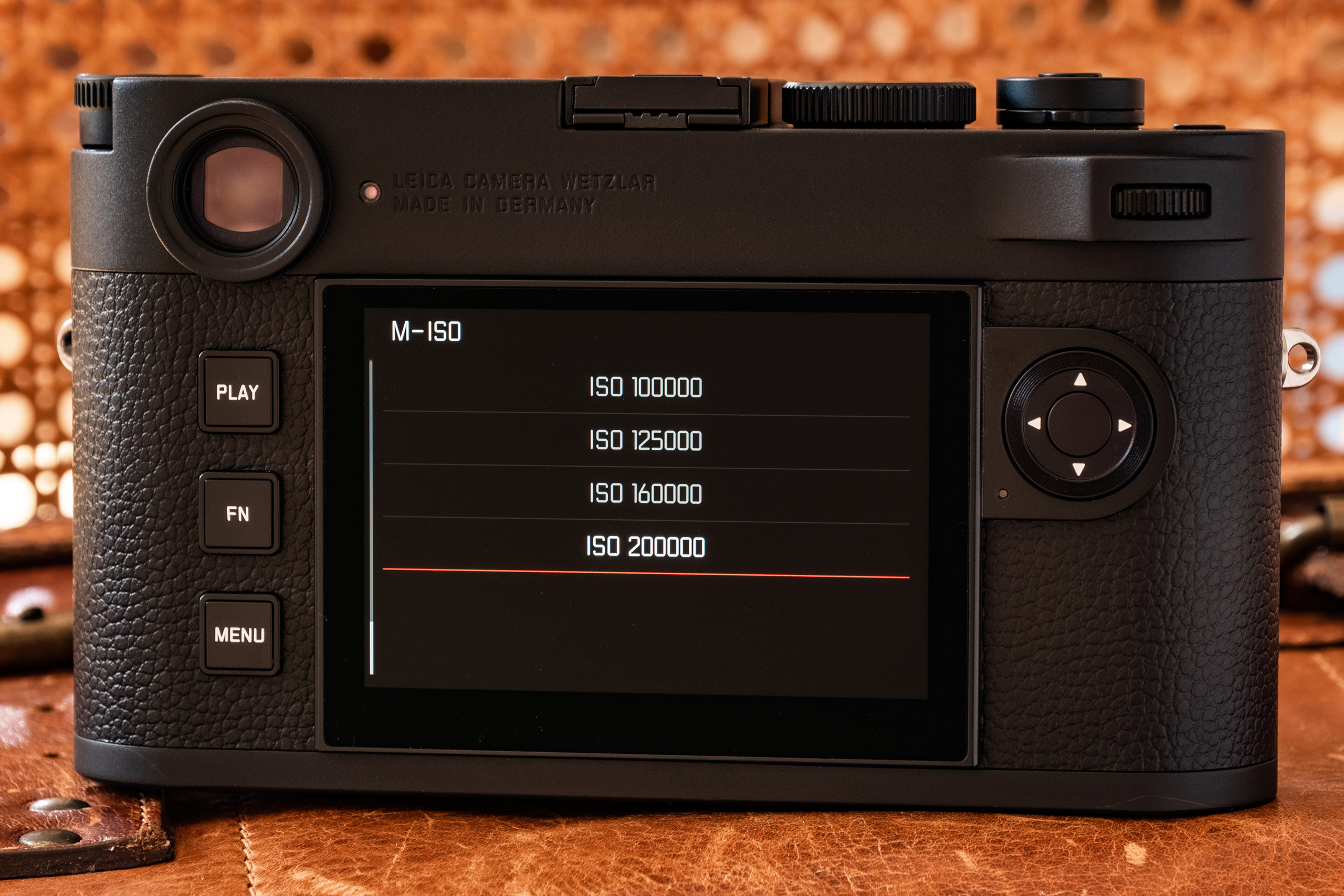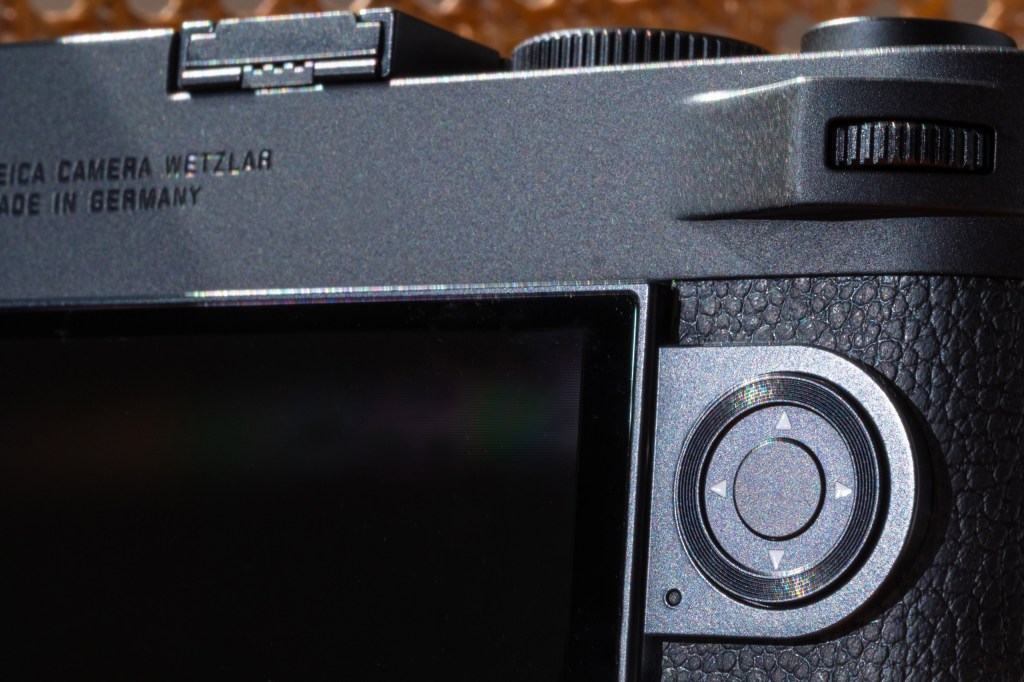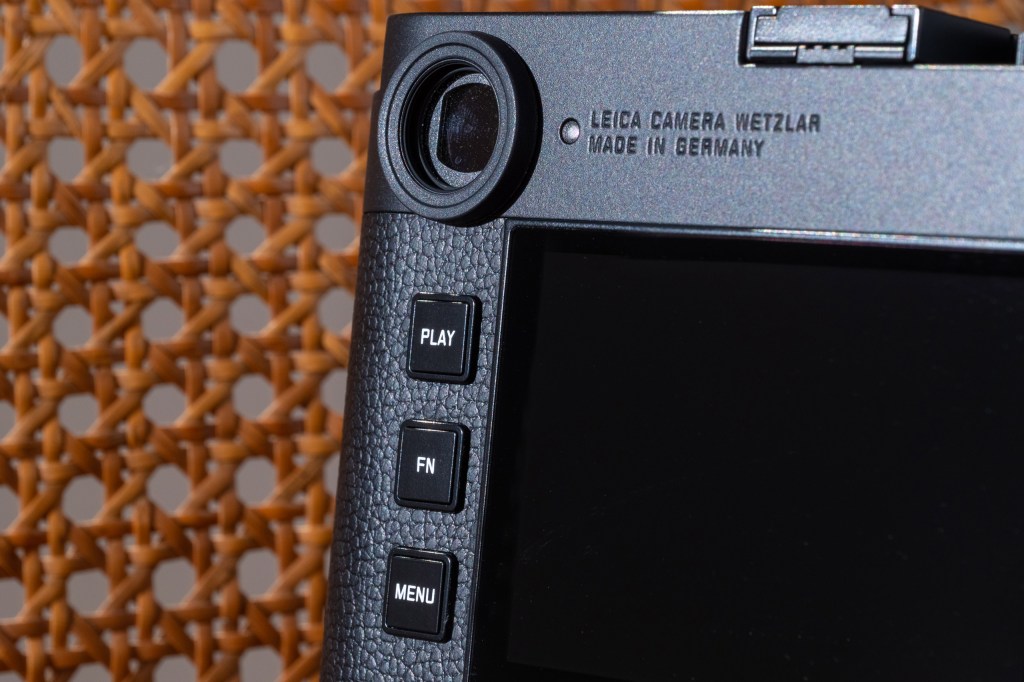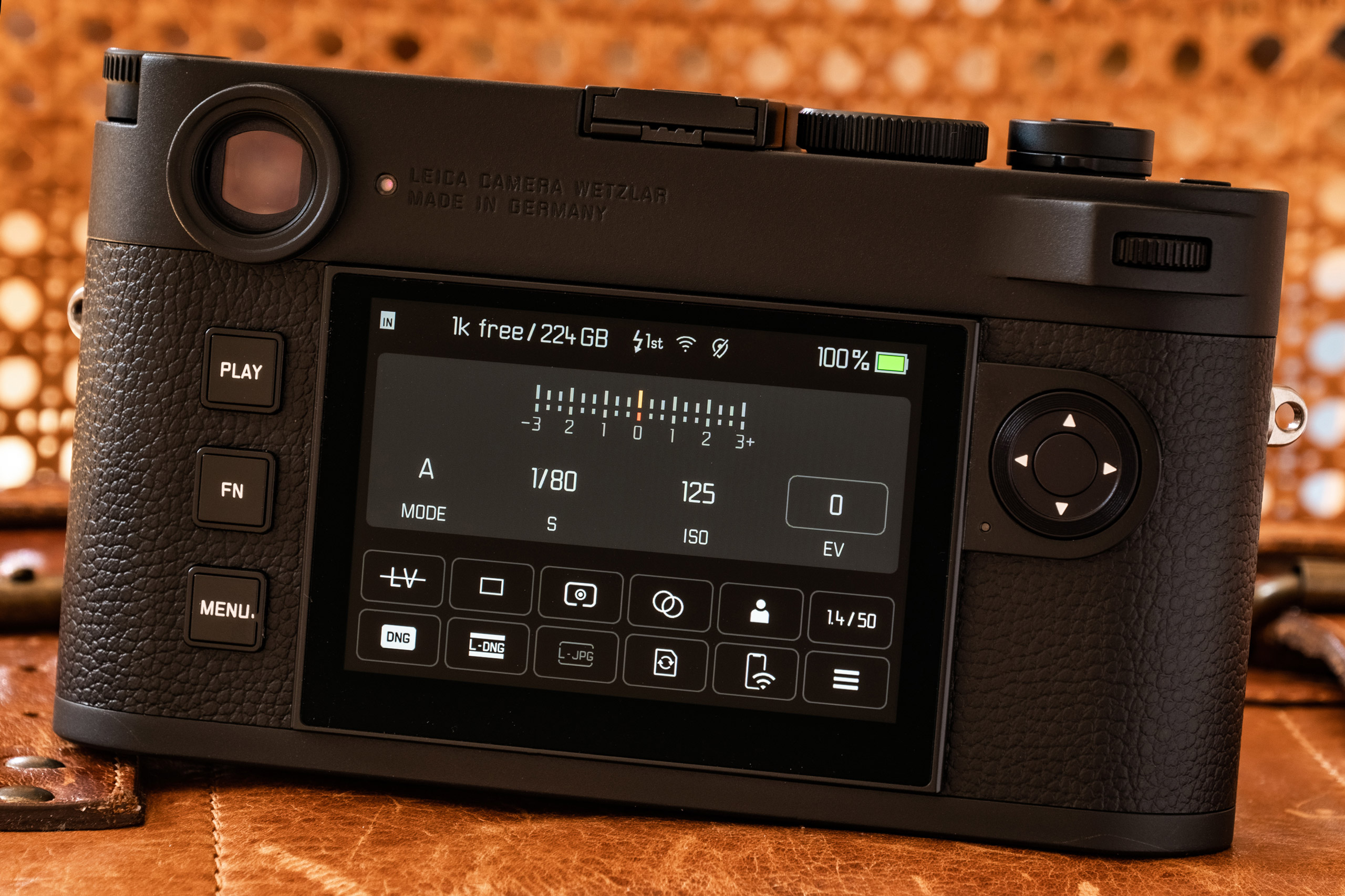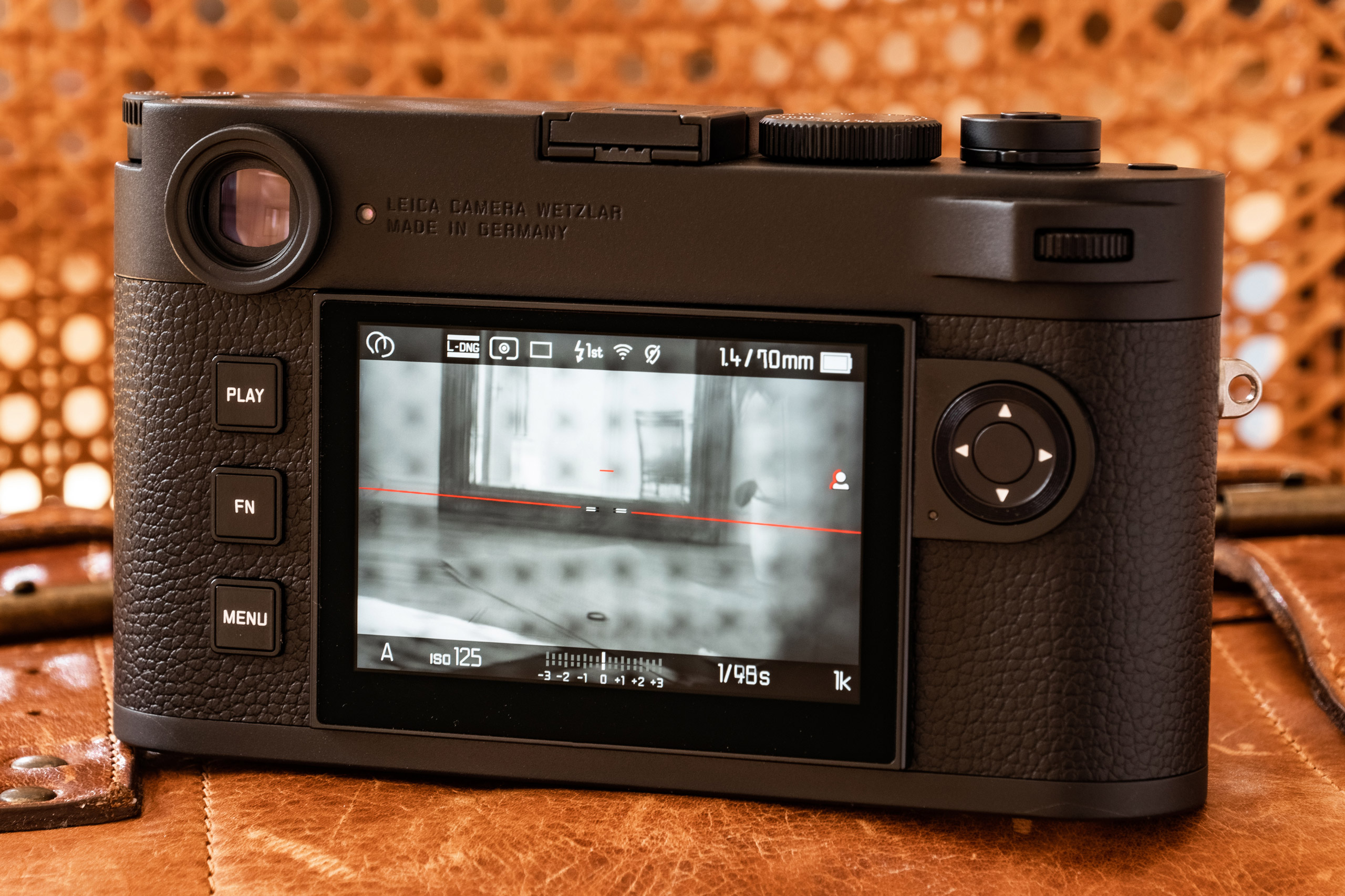Amateur Photographer verdict
A fantastic camera for dedicated black and white photographers who can afford such a specialist beauty as this. Its new features make it a worthy upgrade to the Leica M Monochrom.- Outstanding resolution + 256GB of built-in storage holds 4000 images
- Quick to use, modern interface
- Great for infrared shooting too
- Unique black and white look
- High cost – for lenses too
- Viewfinder information is limited
- Not easy to use third-party lenses
- JPEG noise reduction slightly harsh
A digital camera that costs over £8,000, but which only shoots black and white pictures might seem absurd to some. That the Leica M11 Monochrom was the fifth no-colour camera launched by the company in eleven years suggests otherwise. Thankfully, there are alternatives for those of us who lack such funds.
Leica M11 Monochrom at a glance:
- $10,160 / £8,300 body-only
- Black-and-white only digital camera
- 60MP full-frame back-illuminated CMOS sensor
- ISO 125-200,000 range
- Rangefinder manual focusing
- 256GB of internal storage
- Leica-camera.com
Crazy or not, Leica holds something of a monopoly in this area, as no other brand has applied itself to this artistic niche; Ricoh’s release of the Pentax K-3 Mark III Monochrome in 2023 being the exception. Despite a healthy level of activity in digital black & white photography, only these two firms devote camera design exclusively to the monochrome form.
While most black and white fans choose to shoot in colour and convert later, the Leica Monochrom series offers far better image quality for those dedicated to colourless images. With no coloured filters over the pixels, they gather more light, and without the need to aggregate their findings to produce a coloured photograph, each pixel acts on its own to provide much greater resolution of detail than would be possible from the same number of pixels under a Bayer pattern filter array.
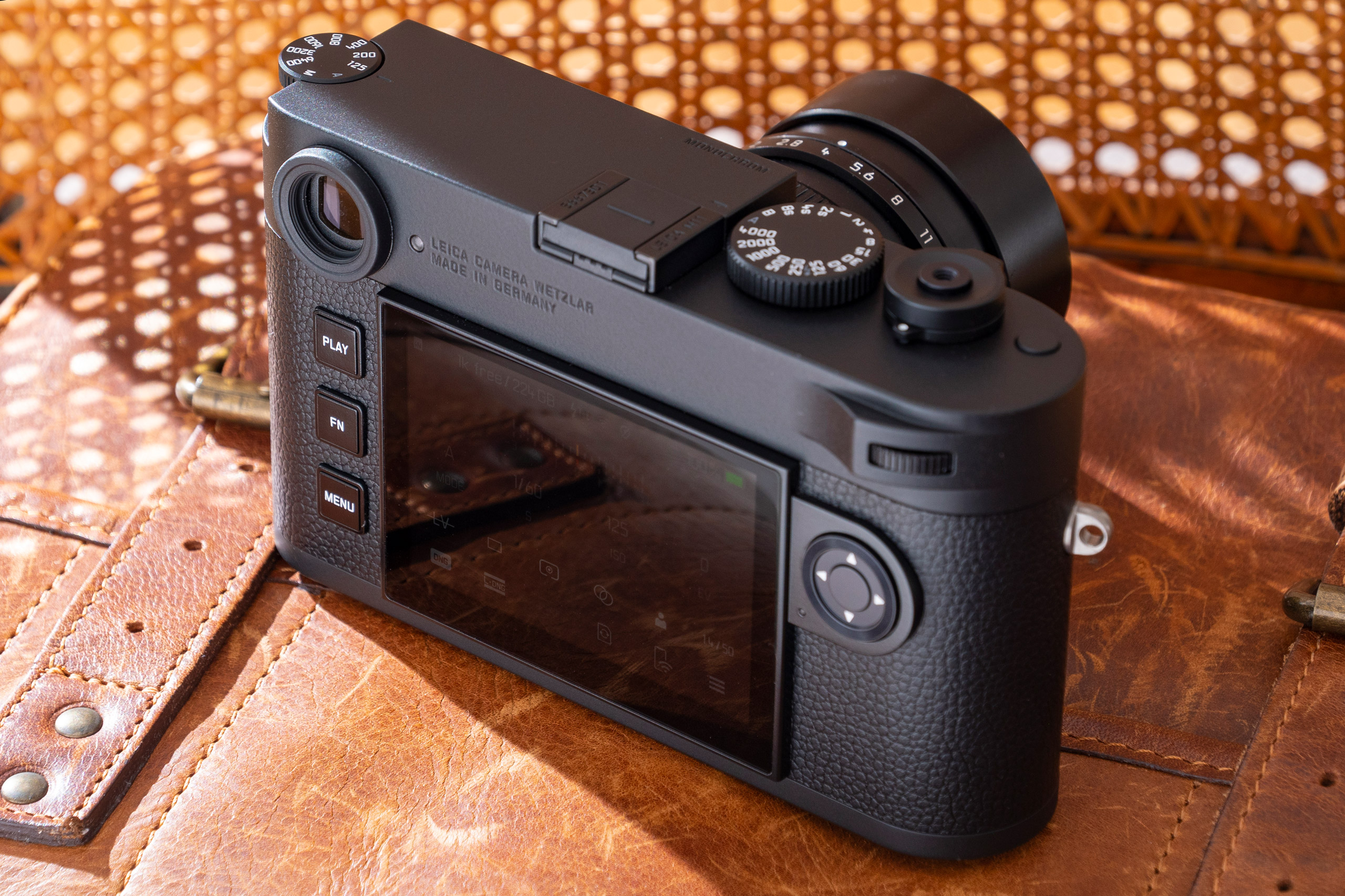
Previous models such as the Leica M10 Monochrom and the fixed-lens Leica Q2 Monochrom have demonstrated the principle is sound and effective, and that image quality benefits a great deal. This later Leica M11 Monochrom, though, advances the idea in two new directions – with a higher-resolution, more modern sensor, and with all the up-to-date features and functions of the company’s excellent M11 camera platform.
Features
The Leica M11 Monochrom is a 60.4MP rangefinder camera that exclusively records monochromatic images. Of course, all digital cameras can be used to create black and white images from their colour captures, simply by removing the colour in software. But the way the Monochrom is designed delivers superior resolution.
In a normal digital camera, the readings from the sensor’s red, green and blue-sensitive pixels have to be de-mosaiced to determine the final colour output for each pixel in the final image. But with a monochrome sensor, each pixel reports individually. As a result, Leica claims we can expect detail resolution 100% greater from the Monochrom than from a standard colour sensor.
This camera gives users a choice of DNG raw files and/or JPEGs, and gives us a choice of three pixel-counts for our full-frame RAW/JPEG images, in case the maximum 9528×6328-pixel, 60MB-110MB files prove larger than necessary. When smaller images will do, we can switch to 36.6MP or 18.5MP options to tailor the resolution to the task at hand.
With the potential for such large file sizes, file storage is a pertinent issue. Like the Leica M11, the M11 Monochrom offers built-in storage as well as a card slot for SD media of up to 2TB of SDXC UHS-ll. While the colour version of the M11 can hold up to 64GB, Leica has been generous enough to supply 256GB of internal storage in this Monochrom – enough for about 4000 full-resolution DNG files.
The CMOS sensor used in this model has the same design as that in the full-colour M11. Its back-illuminated structure allows more light to be recorded, so higher ISO settings can be achieved, while noise will be lower at all settings. As the Monochrom has no coloured filters to inhibit light from reaching its pixels, the base ISO level is lifted somewhat to ISO 125, from the ISO 64 base of the colour camera. At the other end of the scale this translates to quite incredible ISO 200,000 maximum. Leica doesn’t have ‘extended’ ISO positions, so all settings are considered in the ‘normal’ range.
The camera offers both mechanical and electronic shutter modes, with openings of 60 minutes to 1/16,000sec. The mechanical shutter deals with 60min to 1/4000sec, while the electronic shutter gives us 60 seconds to 1/16,000sec. The older M10 Monochrom provides a shutter speed range of 16 minutes to 1/4000sec; so this is quite a step up.

The flash sync is the same 1/180sec that we got in the M10 Monochrom, and practically all Leica M cameras for decades. But the introduction of an electronic shutter is completely new for the M Monochrom series camera.
A nice new feature is in the metering mode line-up, as the M11 Monochrom inherits the multi-field, centre-weighted and spot configurations of the colour M11 while also adding a highlight-weighted mode. This new mode is designed to ensure detail in the brightest areas is retained, as the camera detects the lightest tones in the scene and protects them from burn-out. This is particularly important with the Monochrom, as unlike with colour sensors, there’s no ability to reconstruct clipped highlight detail in raw processing.

Other notable new features over the M10 Monochrom include a 2.3-million-dot LCD touchscreen, the adoption of the new 1800mAh BP-SCL7 battery with its considerably increased life, and an aluminium body similar to the black M11, that means the camera weighs 540g instead of 660g.
In all, the Leica M11 Monochrom is as much a completely different camera to the M10 Monochrom, as the colour M11 is different to the colour M10. The additional resolution the newer models bring will probably get most of the air-time, but it is the additional metering, wider shutter speed range and the internal storage that are the elements that make the new camera more exciting to work with.
Key features
- Sensor: The 60MP sensor in the M11 Monochrom is the same back-lit CMOS unit as that used in the M11. However with no coloured filters on the pixels, the base ISO lifts from 64 to 125
- Storage: The camera comes with an SD card slot, but also 256GB of internal storage. Users access the internally stored images via the USC-C port or by copying the files to an SD card
- Power: The M11 Monochrom uses the more powerful BP-SCL7 1800mAh battery that Leica says powers the camera for over 700 frames. The USB-C port can be used be used to charge the battery or to power the camera while in use
- LCD Screen: The camera’s rear screen gets an upgrade to 2.3-million-dot resolution and can be used for touch controls when selecting items from the quick menu, for magnification and positioning the spot meter. Touch function doesn’t extend to the main menu, though
- Metering: The metering set-up offers users a new highlight-weighted system in addition to centre-weighted, spot and multi-field. This additional mode aims to protect highlights in high contrast conditions
- Focusing: Focusing is achieved manually using either the excellent rangefinder system in the viewfinder or via the rear screen in live view mode. The rangefinder is quick to use, but focuses only in the centre of the view. Live View allows focusing almost anywhere in the frame and is more accurate when using wide apertures and off-centre subjects
Build and handling
Anyone who has come into contact with a Leica M camera before will know exactly what to expect. This M11 Monochrom is a solid beast designed to withstand almost anything the professional photojournalist might throw at it. While some users keep their camera in its original box and swaddled in bubble wrap, others hang theirs from their neck while jumping into shell holes with bullets whizzing around their ears. This camera is happy in either situation.
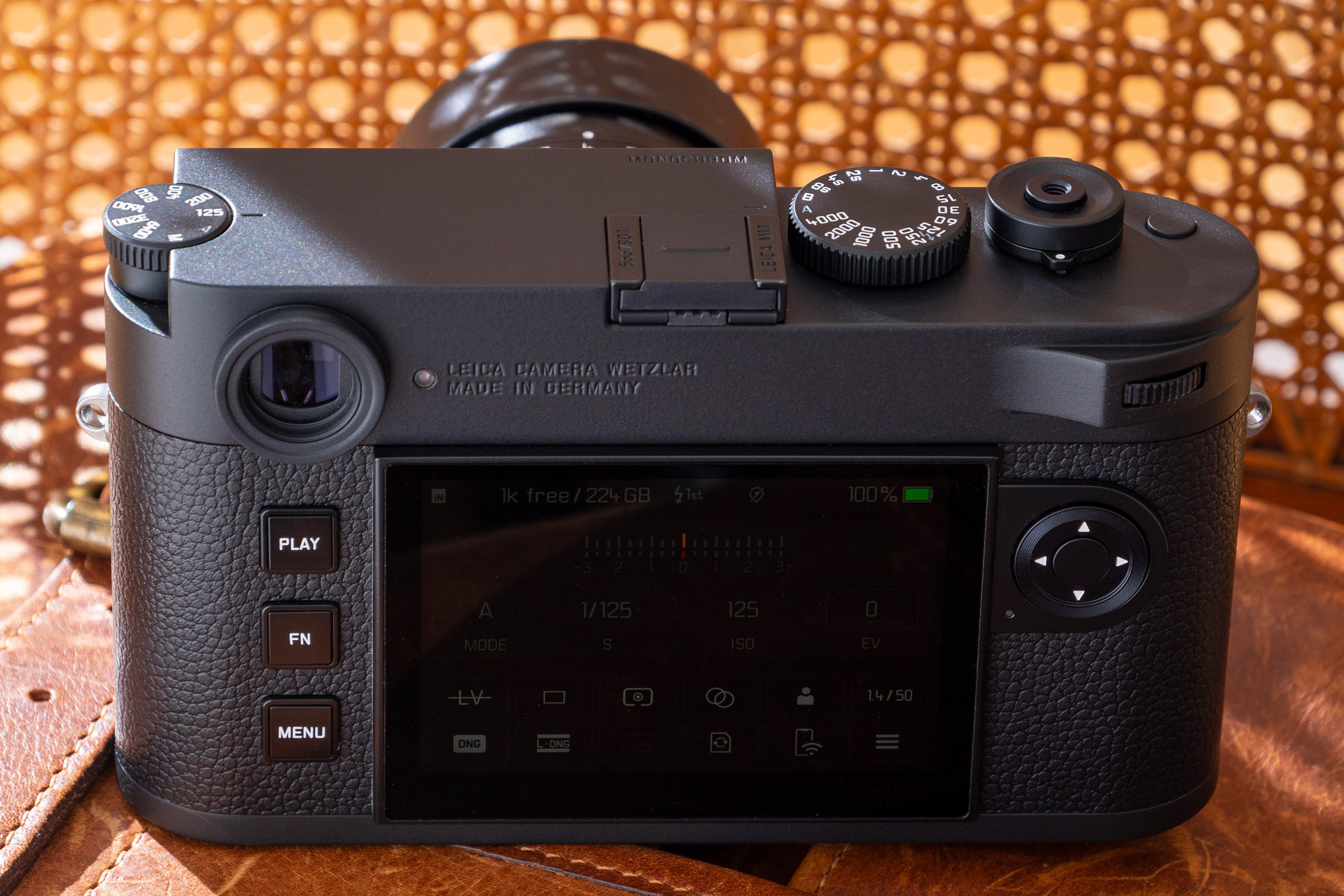
Holding a Leica M is a quite different experience to working with most other types of camera, but with time and practice it becomes comfortable and natural. The M11 Monochrom has a relatively smooth and featureless body, so it might feel at first that there’s little to cling to. But the extended thumb grip on the top right of the rear of the body makes for a very secure hold.
In standard Leica style there are few controls on the body, with just three buttons on the left of the rear screen for activating screen-related functions, and a four-way ring of buttons to the right with a ‘set’ button in the centre for navigating and changing settings.
Leica provided an extra function button on the top plate beside the shutter release that first appeared with the colour M11. This function button joins the rear FN button and the thumb wheel to give three customisable controls in all. The function assigned to the buttons can be determined via the menu system, or via a long press of the button itself. For each of these buttons there are 28 feature options to choose from.
I found using the thumb dial to activate exposure compensation, the FN button to deal with manual ISO settings and the top plate button to magnify the focus point most useful. You can also magnify the focus point by rotating the focus ring on the lens, but that requires moving the focus. Having ‘magnify’ on a function button allowed me to confirm focus without moving it.
Older Leica cameras don’t always have the most straightforward navigation systems, but life has become much easier in these later models. It takes a little while to become familiar with the system of course, but once acquainted the logic and processes become clear.
The first point of contact when looking to alter settings, other than shutter speeds and ISO, is the quick menu. One press of the menu button brings up a screen that displays icons and readings for the majority of features we’ll need most often. From this screen we can not only monitor the state of our settings but also change them by touching the appropriate icon on the rear screen. There are 12 selectable icons on this screen that can be touched or navigated to via the 4-way button array to the right of the screen.
A key operational difference between settings selection via the quick menu screen and the main menu is that in the quick menu we just select the setting value we want, and can then press the shutter to carry on shooting. In the main menu any selection requires that we press the ‘set’ button to confirm that we really do want to change things. If you forget to press ‘set’ your changes won’t be registered.
Should you need to access anything that isn’t on the quick screen, another press of the menu button takes us into the main menu. Unfortunately, this does not offer touch controls, so we need to use the 4-way buttons to travel around it. The up/down buttons will scroll us through the whole menu, but pressing the menu button repeatedly allows us to jump from page to page so we can find what we are looking for very quickly.

For the most part, menu items are positioned and labelled as we might expect, though getting to the part where you can customise the live view screen takes quite a lot of presses. I suppose we don’t need to go there often.
When viewing the rear screen in live view mode, we can also scroll through a number of display options that introduces and hides different information panels. The full image cannot be seen unobscured with information shown at the same time; the live view window always fills the whole screen with no option to make it smaller.
So we need to cycle through to check our composition. While using the live view shooting mode we can use the touch screen to double-tap the area we want to magnify for focusing and we can direct the spot metering circle to the area from which we’d like to meter. It’s all rather quick and easy.
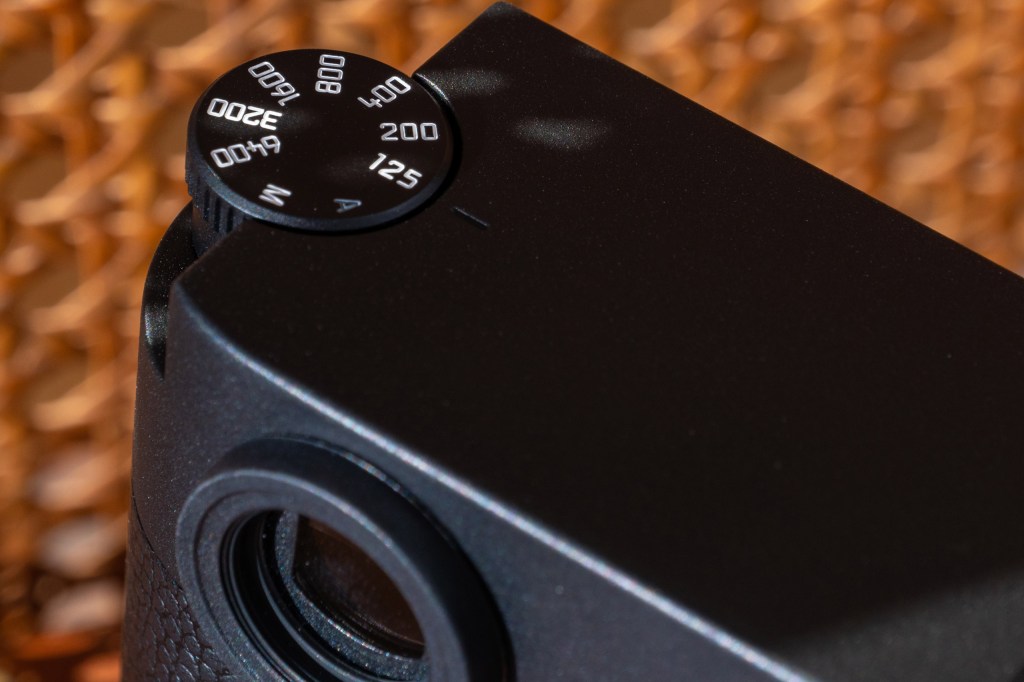
Leica has continued its use of the pop-up manual ISO control dial in this camera, and we can use this to choose settings between ISO 125 and 6400. The dial offers an ‘A’ position for Auto ISO, and when we want to step beyond ISO 6400 we can use the M setting, which activates the Manual ISO selection right the way up to ISO 200,000. The manual mode also gives us access to all ISO settings in increments of 1/3EV, while the dial only allows full stops. Strangely, we can assign Auto ISO to the M position too, so we’d have two Auto ISO settings.
The base of the camera no longer comes off, but any nostalgia for this loss is more than compensated by the efficiency with which the battery and/or memory card can be changed with the new design. Leica has employed a pop-out system for the battery that requires no cover, and with the flick of a switch the battery pings out from the base. A further partial press-in fully releases the battery, saving it from firing out into your coffee.
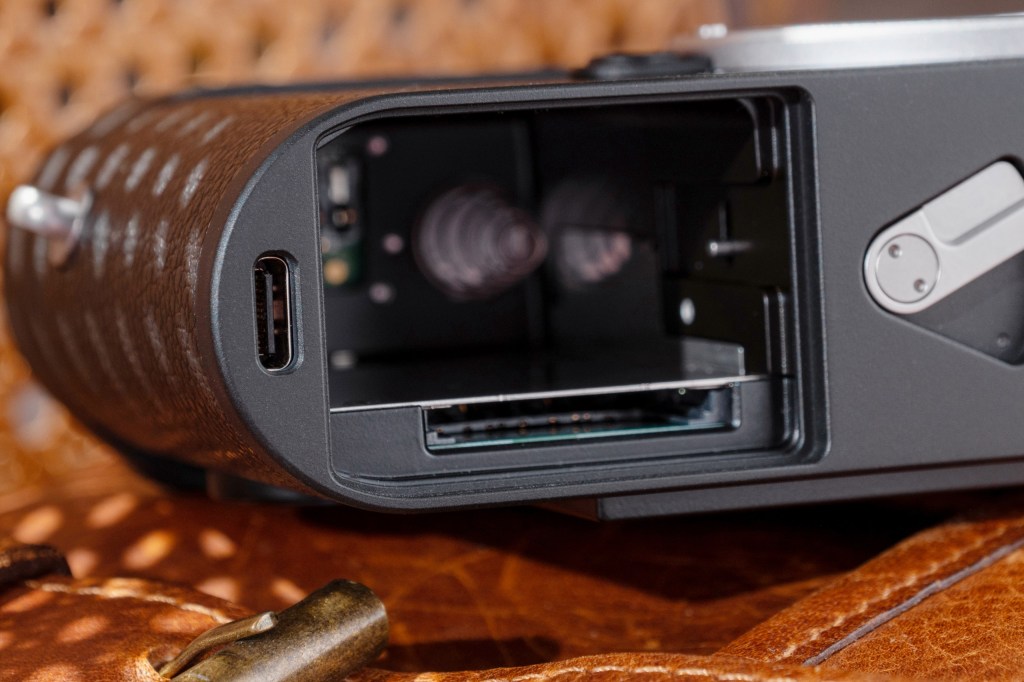
The battery compartment also houses the memory card slot, so removing the battery is necessary when changing the card as well. This is a drag if your card is full while the camera is on a tripod, as the release switch is right next to the tripod thread: the camera will probably have to come off the tripod and/or quick-release plate to complete the task. Fortunately, the camera has extremely generous internal storage, so this shouldn’t happen often.
Images captured on the 256GB internal storage provision can be accessed directly via the USB port and downloaded very quickly, or can be copied/backed-up to a removable memory card. It is worth noting that you will need to ensure the USB Mode is set to Apple MFI if you are using an iPhone or iPad, and to PTP if you are a Windows person, to ensure your computer can see the internal disk. Leica’s excellent Fotos app will allow wired or wireless downloading to a phone or tablet. The app also gives full remote control over the camera and allows both images and videos to be copied to your phone for sharing.
Viewfinder and screen
As this is a rangefinder camera, the viewfinder doesn’t offer a direct view of what the camera is about to record. Instead, we look straight through the eyepiece and out of the window on the front of the camera. Inside the viewfinder, though, are a series of guide marks (or framelines) that show us how much of the view our lens is covering, and this changes automatically when you switch lenses – so long as your lens is recognised by the camera.

Third party lenses may not automatically get their focal length detected, so we can use a switch on the front of the camera to move the guides temporarily to show what will and won’t be in shot.
Focusing is achieved using two images created via a pair of windows on the front of the camera, and we aim to adjust the lens focus to bring the images together in the viewfinder. Once mastered this is a remarkably quick way to focus manually, but it takes a little getting used to.
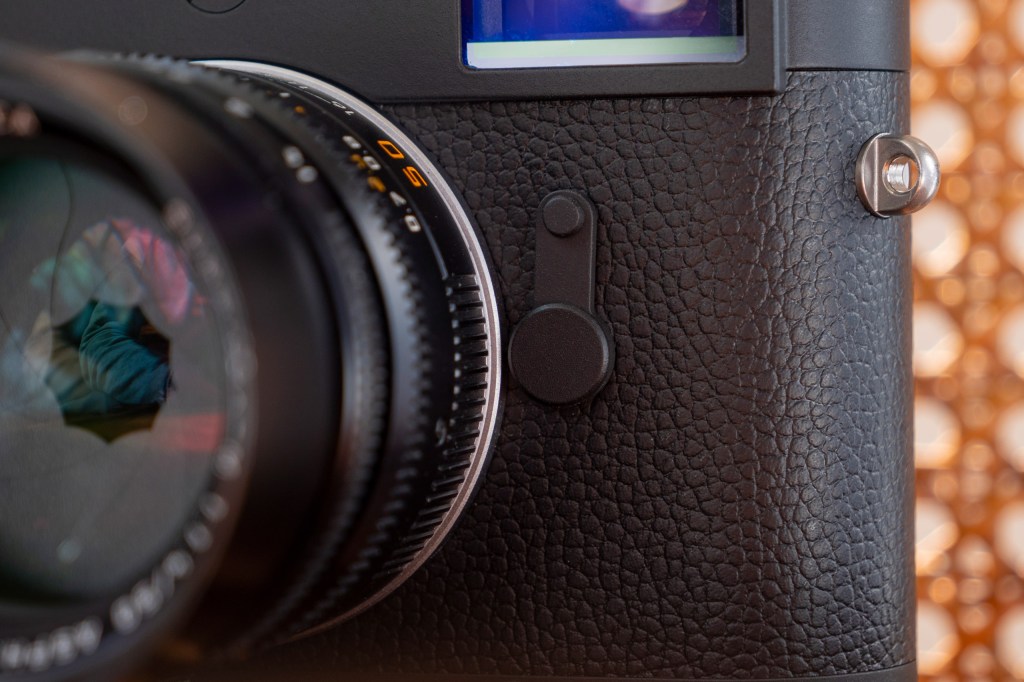
The viewfinder is a standard 0.73x Leica unit with the same base length as the M11, and guides are shown in pairs for lenses from 35mm to 135mm. There is no built-in dioptre adjustment, but separate correction lenses for the eye piece can be purchased for about £140.
The information shown in the viewfinder is pretty limited, and we only get to see an arrow-and-dot exposure meter with no indication how far out the exposure is – which seems somewhat primitive. Other information includes the shutter speed (only in aperture priority) and exposure compensation as it is altered. Even though the camera can estimate what aperture we are using, the viewfinder doesn’t display it.
The rear LCD screen is an updated model that offers a 2.3-million-dot resolution view of what we are shooting, or have shot. Live view shooting is enabled either by the Fn button (at its default setting), or by tapping an onscreen button in the quick menu. The viewing angle of the screen is really very good, and a half-press of the shutter release allows us a preview of the exposure we are about to commit.
Performance
It was quite a treat to have such a choice of metering modes, and during the review period I made the most of them. While the multi-field and centre-weighted modes worked well and delivered the goods in most situations, I rather fell in love with Highlight-Weighted mode and found that I was setting this and leaving it on when shooting in high contrast situations – which is what I’m attracted to.
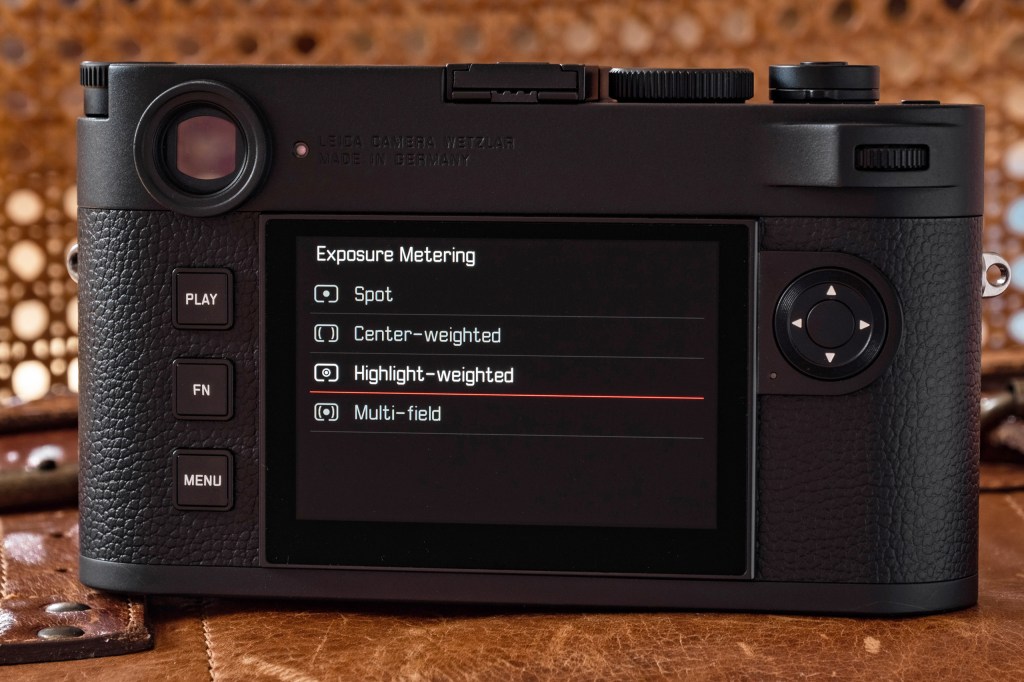
The spot mode is also very good, but harder to manage when using the camera hand-held, as really you need to move the spot to wherever the subject is. A press and hold of the shutter release locks the exposure of course, so we can meter, lock and recompose.
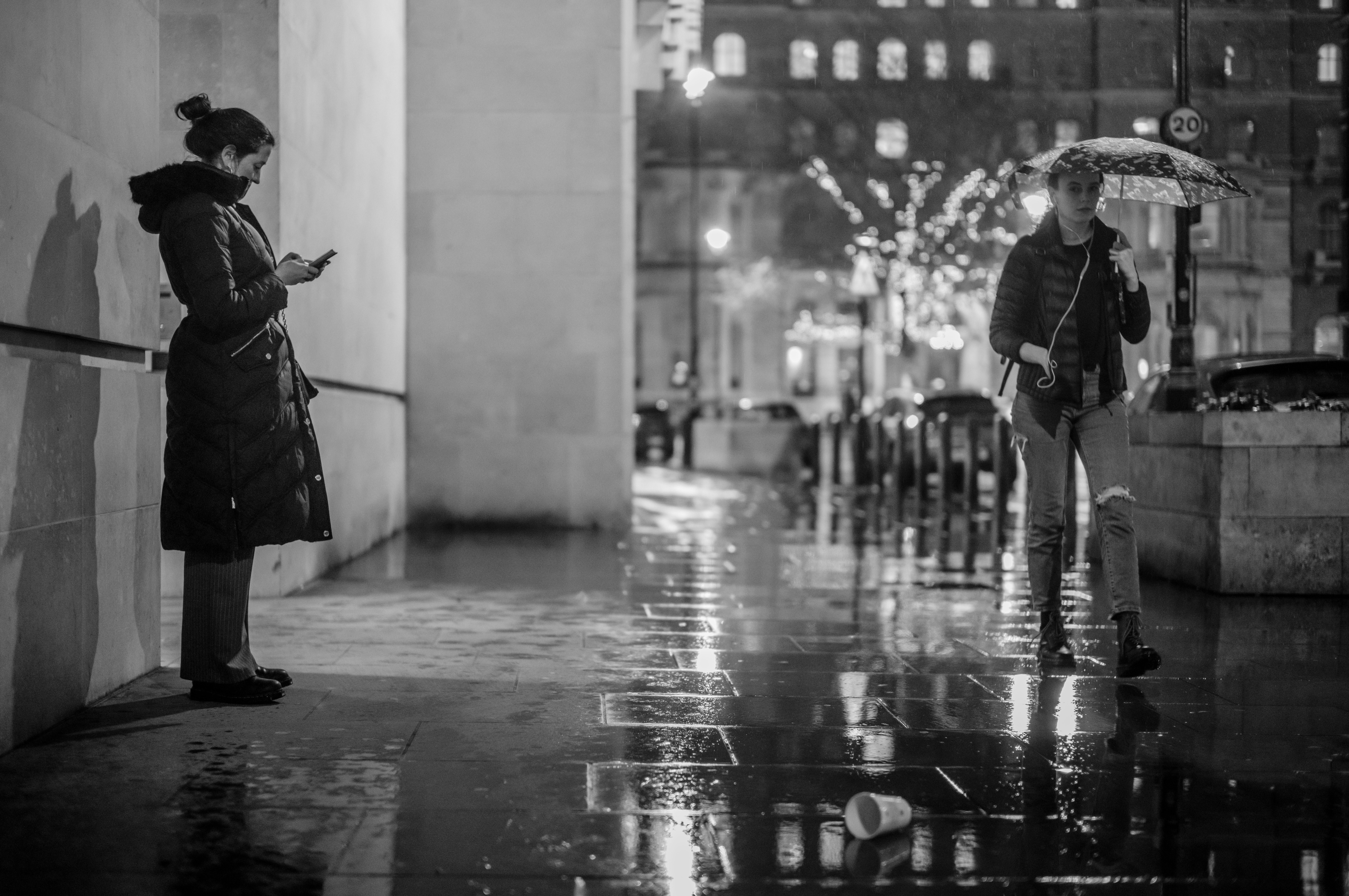
The drive modes seem to work slightly better than advertised in some situations. In scenes short on detail the camera can manage about 22 DNG shots before the 4.5fps rate begins to drop off, but when there is more information to record, I found burst depths dropped to around 15 frames. High ISO settings reduce the depth of the burst too it seems, probably because the higher ISO files are larger on average.

A neat feature I enjoyed rather more than I expected is the perspective correction function that measures the angle at which the camera is held, and automatically corrects converging verticals live on the screen. Raw files are not corrected of course, but JPEGs are and on the whole are really quite well worked. Nowadays it’s pretty easy to fix geometric distortions automatically in software, but it’s fun, and useful, to have the option in-camera too.
Image quality
The Leica M11 Monochrom produces an image that is quite unique. Not only are the files full of detailed tones and subjects, they have a very particular look to them. Straight from the camera, images have a preponderance of middle tones, with few at the really bright end of the histogram.
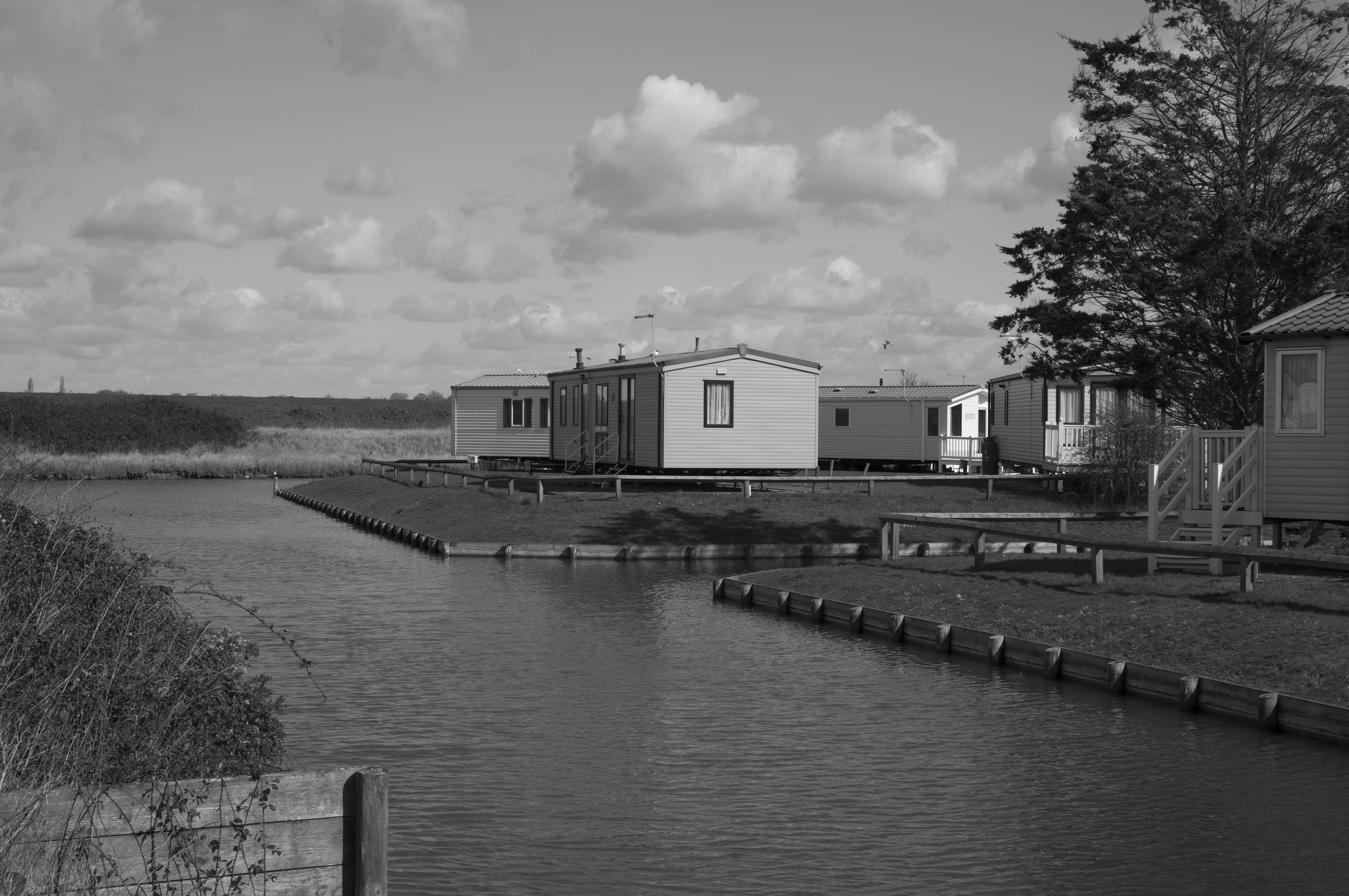
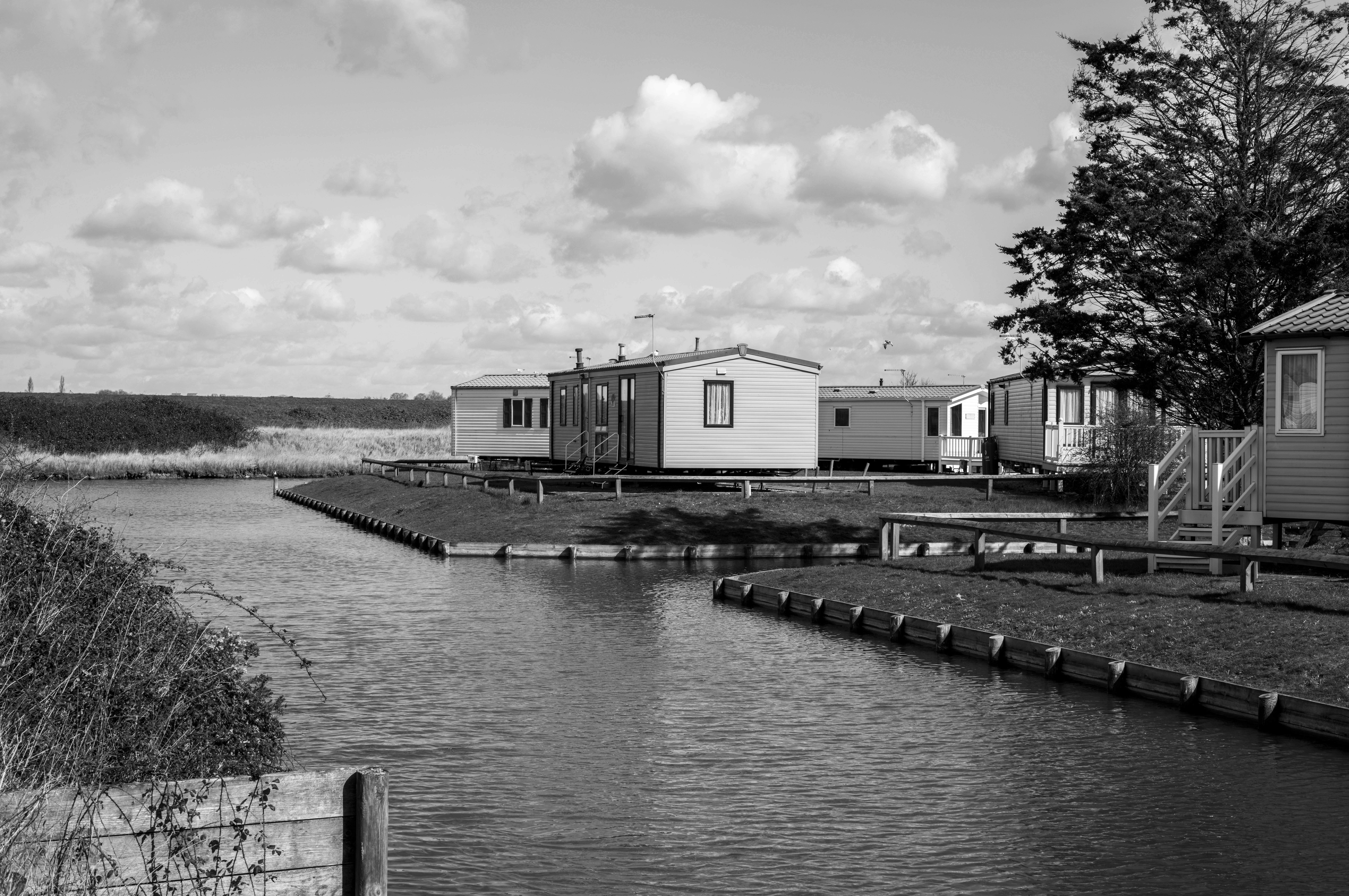
Whites are very well protected and the brightest tones in any scene usually very well recorded. There are few deep blacks too, so it is very often necessary to inject a degree of contrast to bring the images to life. The look is of Ilford FP4 rated at ISO 64 and processed in Perceptol to a low contrast index, or that 1950s feel we get from a green-channel conversion. Yellow, orange and red screw-on lens filters work well to add some tonal sparkle in the same way they do with film.
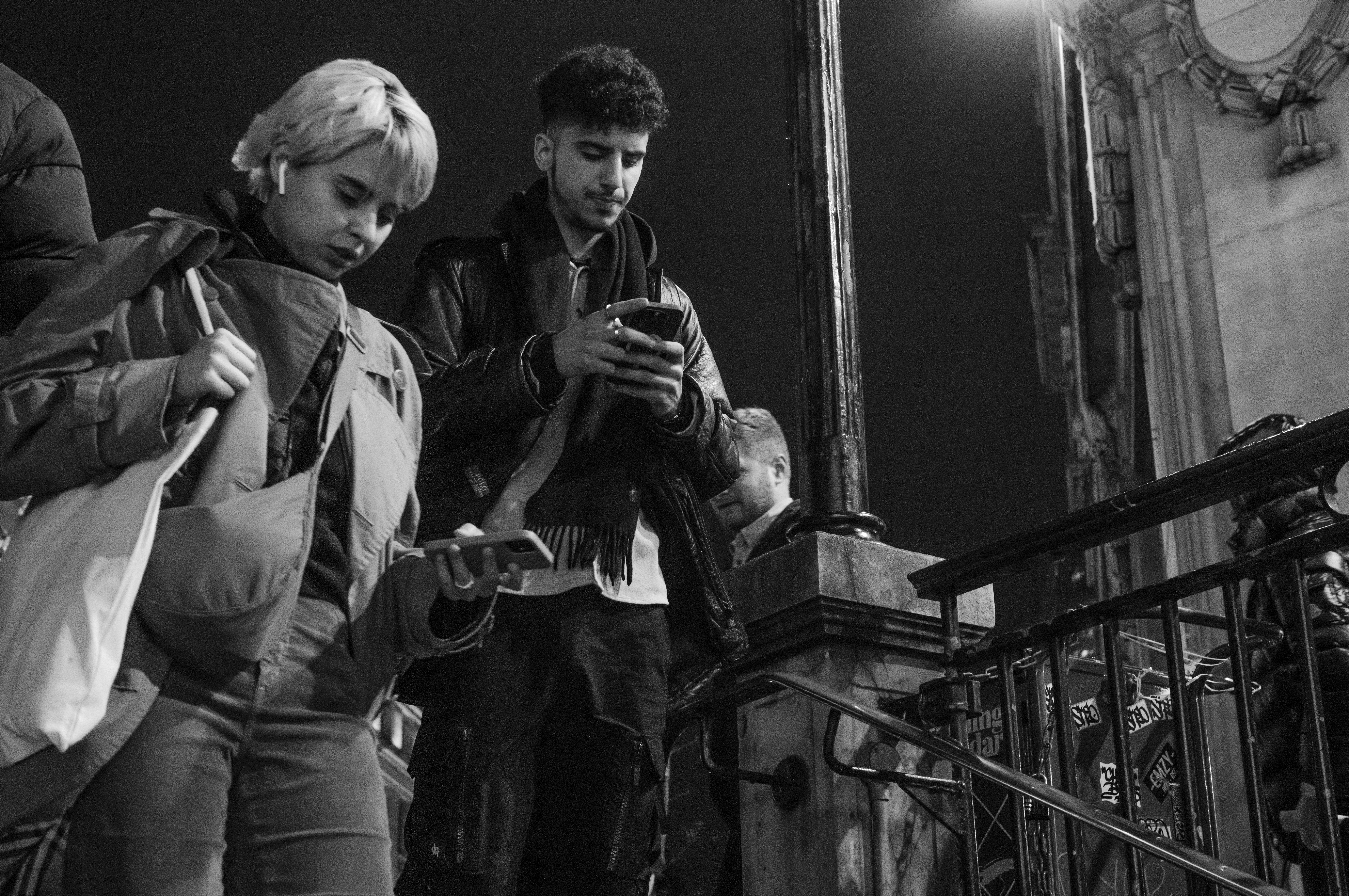
I noted something else when inspecting my images that led me to experiment with an infrared filter. Leica tells me the sensor’s own filter cuts infrared at 750nm, but I was easily able to record some very IR-looking images with a Hoya R72 filter that allows only wavelengths beyond 720nm.

While my other camera (a Lumix GX9) struggled to get enough light to register an exposure, the Leica M11 Monochrom dished out shutter speeds of 8sec at f/16 and ISO 125 in bright sunshine. The results deliver that spectacular display of snow-like grass and deep toned blue skies we expect from IR-converted cameras.
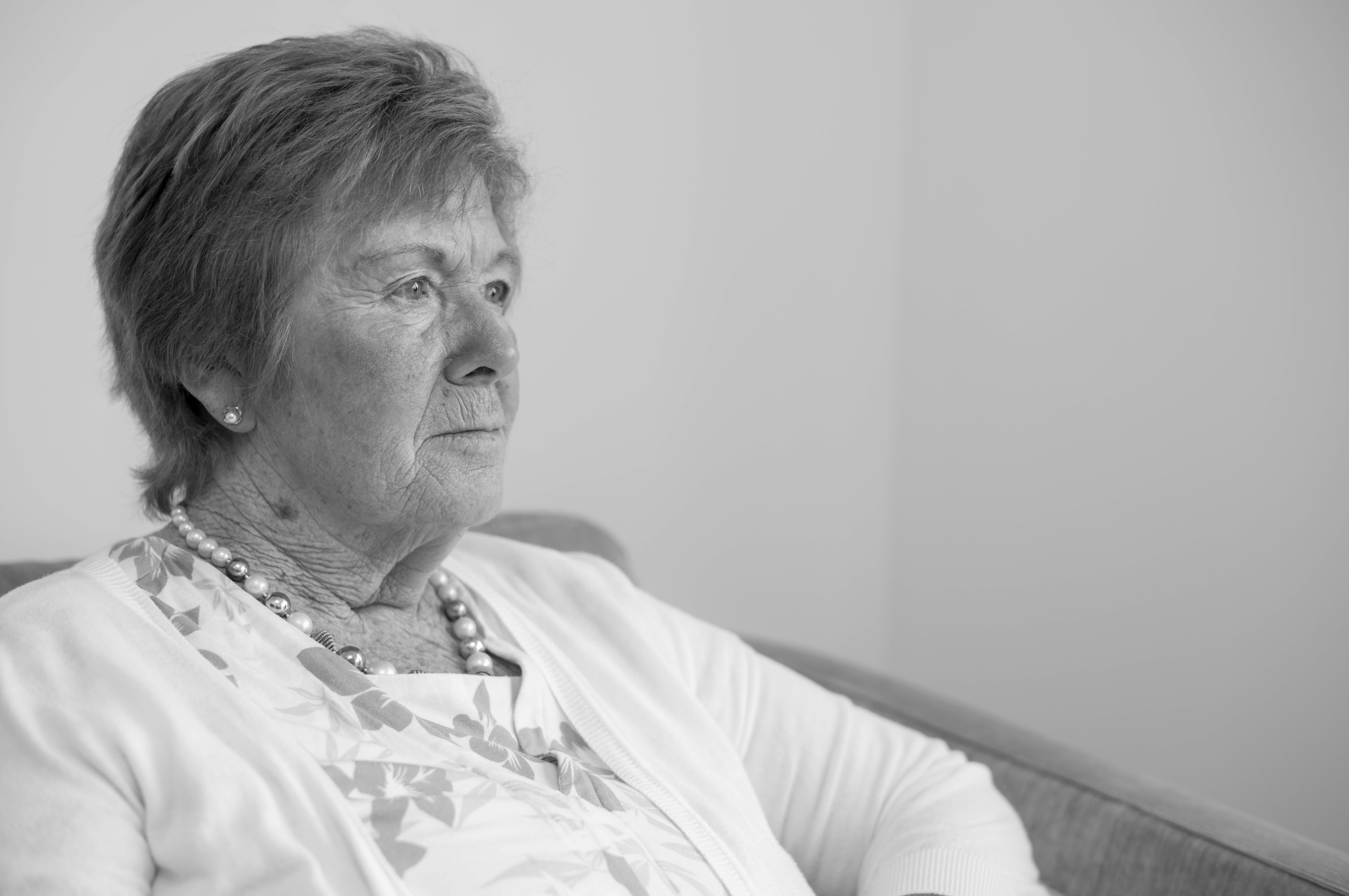
Noise performance is very good, and at ISO 125 we get an exceptionally clean image. A lack of any form of noise or texture is a feature of images right the way up to ISO 800. Beyond this point noise can be experienced by enthusiasts when images are blown up to 100%, but as it emerges from the mid tones it comes in a really rather pleasant granular film-grain type pattern.
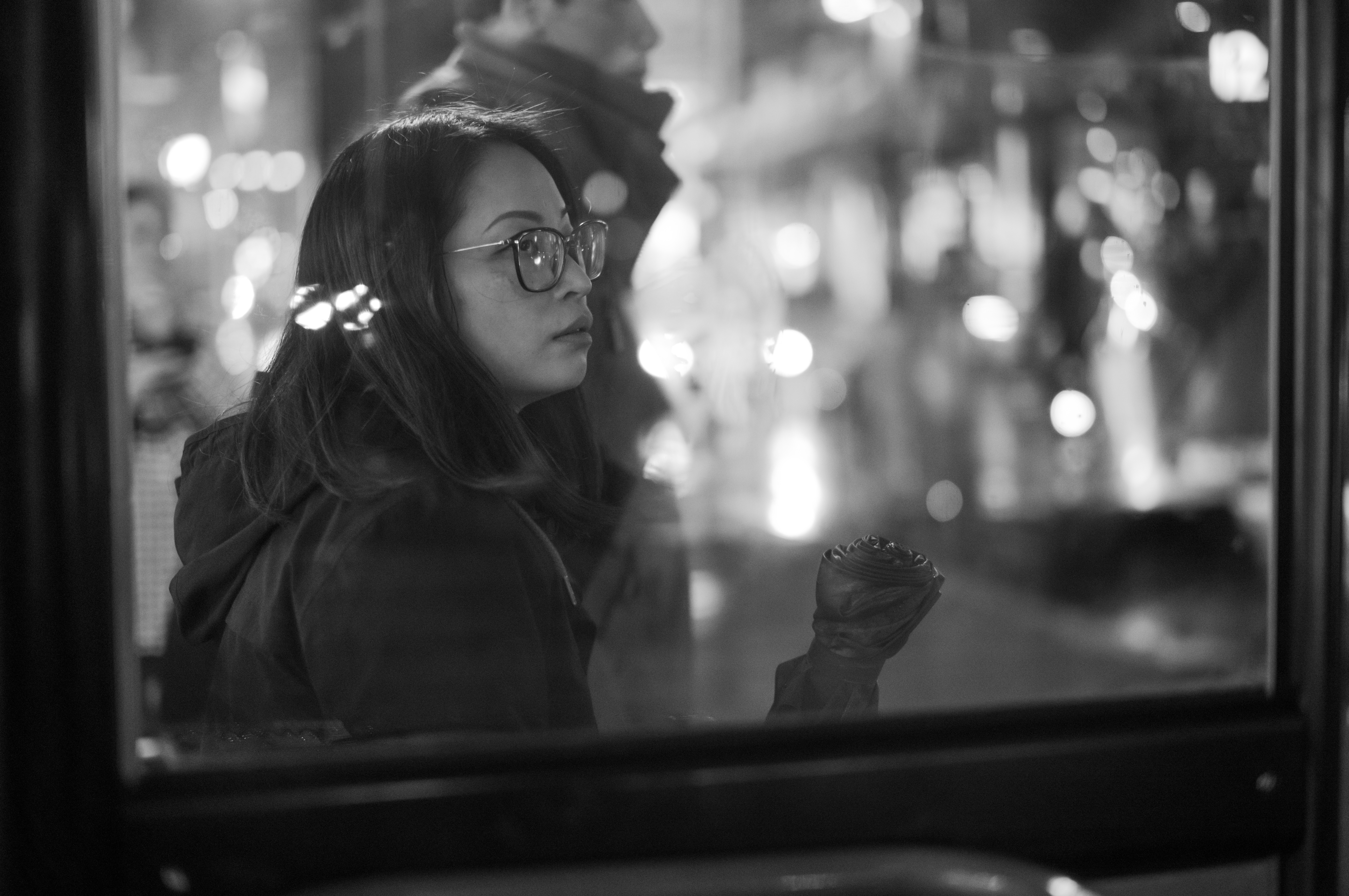
For those making accurate exposures that need no further lifting, ISO 50,000 is still very pleasing indeed, with heavy noise only becoming a little over-powering from ISO 100,000 to 200,000. At these top sensitivity settings, and indeed settings from 6400, some caution is required when lightening shadow areas as without care a distinctive, tartan-like grid pattern can appear. It pays then to get exposures as right in-camera as possible, and perhaps a little bright, and as JPEG noise reduction is a little destructive at these higher ISO settings they are best served RAW.
Leica M11 Monochrom: Our Verdict
The Leica M11 Monochrom is a specialist camera that is not for everyone. It’s obvious limitation – that it only records in black and white – will delight some and make no sense to others. While I would not like to give up shooting in colour entirely, the idea of a mono-only camera is pretty exciting. That this camera shoots better mono than any camera I’ve ever used – and by a long way – makes it all the more attractive. Of course the main barrier is the cost, but for those with the budget this machine will bring years of enjoyment.
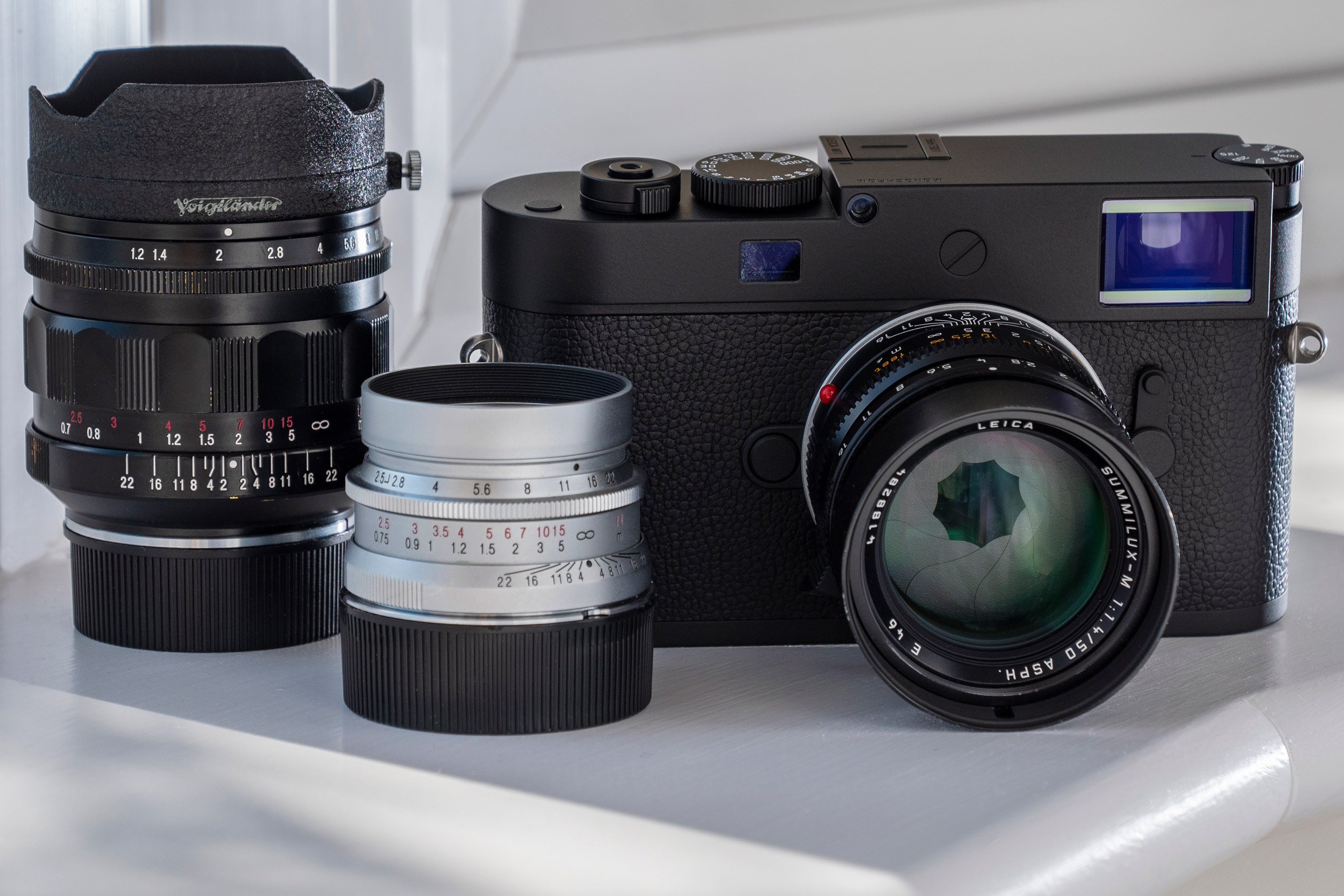
For those who already own an older Leica M Monochrom, this M11 version really is good enough to justify the upgrade. It isn’t just the resolution – not everyone needs 60MP – but the changes to the handling, the improved image quality and additions such as the electronic shutter and highlight metering that make it a significantly better camera than the M10 Monochrom. The files aren’t simple to deal with at first, but with time and experience users will learn to get the best from them. The extended sensitivity that makes infrared shooting easy will also be a real attraction to some – me included.
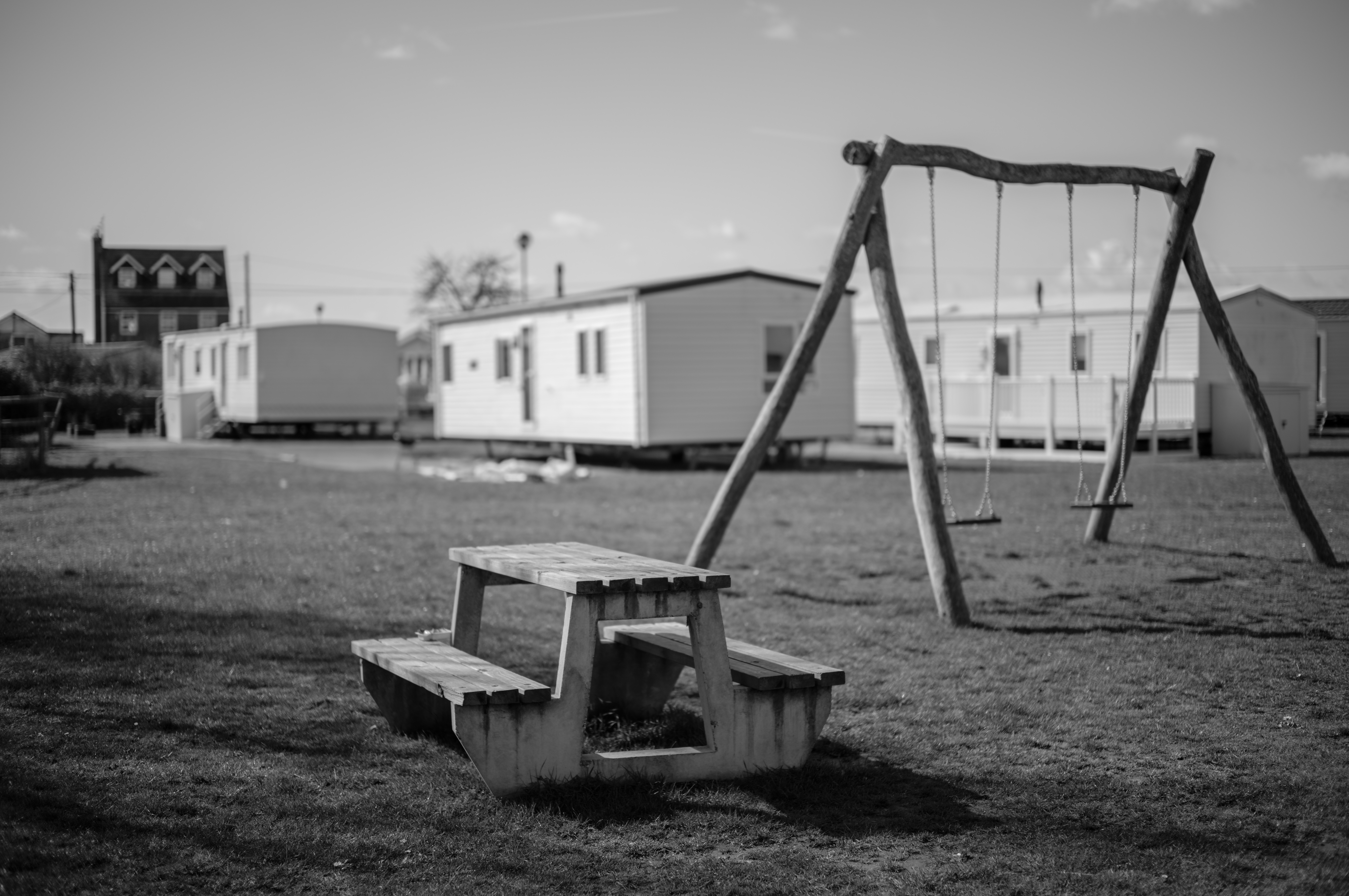
Leica’s desire to produce a camera boiled down to the basics once again means we have no video recording option. I fully understand this move, and know that some of those interested solely in shooting black and white see video as the work of the Devil. But it is a shame we can’t take advantage of this unique look for moving as well as still images.

It’s safe to say there nothing else on the market quite like the Leica M11 Monochrom. Those with the money and the enthusiasm for black and white photography will find no better tool.
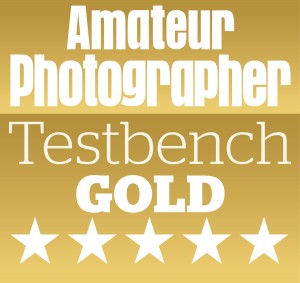
Follow AP on Facebook, X, Instagram, YouTube and TikTok.
Further reading:
- Complete guide to black and white photography
- How to capture moody monochrome landscapes
- Black and white street photography: Tips and techniques from the experts

